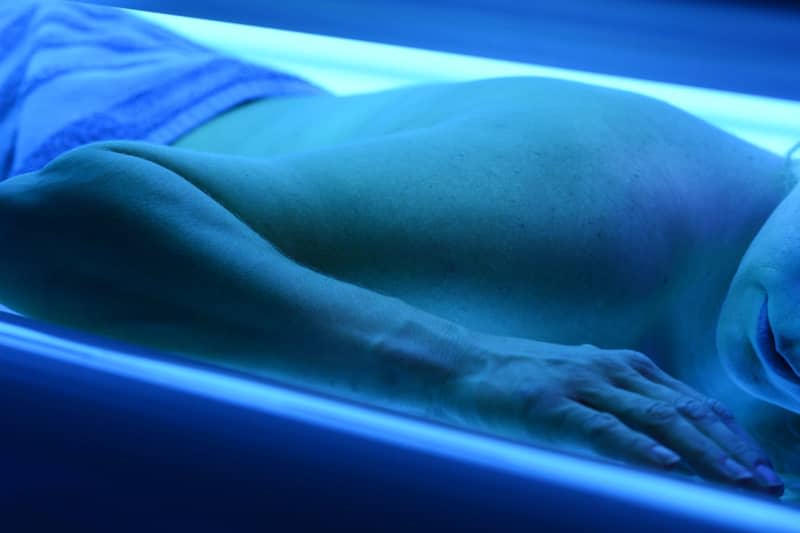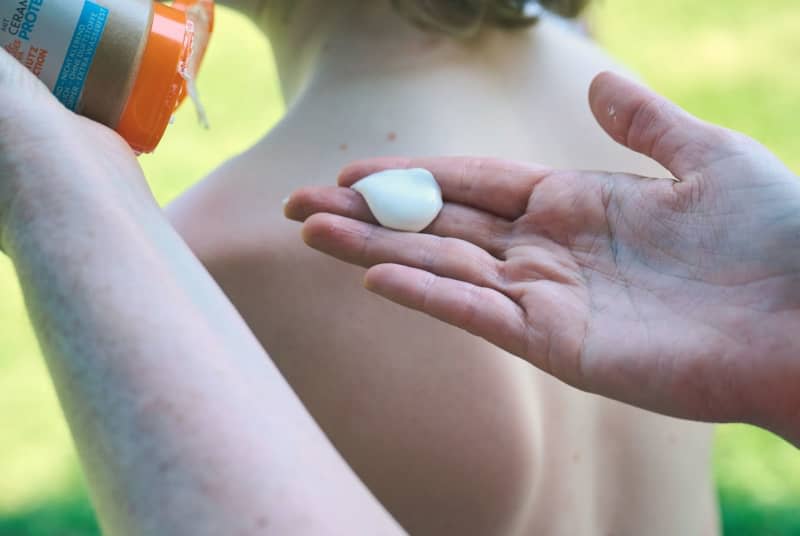With the arrival of summer, warmer days beckon us to enjoy the outdoors. As always, myths about sun cream circulate.
Does a higher sun protection factor (SPF) provide better protection? Can a vegan diet protect your skin? Does reapplying sun cream increase its effectiveness? This reality check reveals the truth.
Reapplying Sun Protection Lasts:
True, but only to an extent
Germany’s Office for Radiation Protection (BfS) recommends applying sun cream 20 to 30 minutes before sun exposure. To maintain its protective effect, regular reapplication is important: “at least every two hours and especially after swimming and drying.”
However, Munich-based dermatologist Christoph Leibich clarifies that no matter how much sun exposure you reapply, there is still a limit to how long you can take it off.
“For example, if you apply sunscreen with SPF 10 and have a natural protection time of 10 minutes, your total protection will last 100 minutes. After that, reapplying SPF 10 or SPF 50 won’t help,” explains Liebich.
Essentially, once your skin has absorbed enough radiation, the time you’re protected is over. Still: To extend that time as much as possible, you should reapply sunscreen at regular intervals.
Above all, it’s important to apply enough sunscreen from the start. Radiation safety experts say the recommended dose is two milligrams per square centimeter of skin, which equates to about four heaping tablespoons for an adult’s entire body.
A day cream light sun protection is enough:
True in some cases
For a day cream to provide effective sun protection, it must contain an ultraviolet (UV) filter. Without it, there is no sun protection, says Environment and Health Protection Officer Kerstin Effers.
SPF should be clearly mentioned on the packaging. “Without this information, the level of consumer protection cannot be assessed,” he says. Experts recommend choosing day creams with a higher SPF.
Applying an adequate amount of day cream is just as important as applying sun cream. Dermatologist Leibich warns that some people don’t apply enough expensive creams to their face, treating them as luxury items.
“If you don’t use the recommended amount, even a high SPF won’t provide enough protection,” explains Liebich. If you are hesitant to use enough day cream, it is better to opt for classic sun cream.
‘Pre-tanning’ in a solarium protects the skin by:
lie
Sunlight or tanning beds expose the skin to ultraviolet (UV) radiation, which is divided into three types: UVA, UVB, and UVC.
UVA radiation penetrates the skin, UVB rays affect only the epidermis, and UVC rays are blocked by the ozone layer.
Lipich explains that tanning beds give a “base tan” that offers no real protection. While the light in tanning beds is primarily composed of UVA rays, which produce a quick but temporary tan, UVB radiation is mostly filtered out.
“UVB rays are necessary to create protection, but they’re banned from sunbeds,” says Leibich.
Pre-tanning in a solarium leads to additional radiation exposure, which is why sunbeds are prohibited for persons under the age of 18. “Any additional radiation is harmful,” Liebich asserts.
A vegetarian diet protects from sunlight by:
true
The idea of protecting yourself from tanning with a vegan diet is appealing, but experts say it’s not enough.
According to the German Pharmacists Association (Abda), vitamin A and beta-carotene found in healthy foods can provide some natural protection for the skin, especially when the UV index is high and they are insufficient to block sunlight.
Beta-carotene, abundant in fruits and vegetables, contributes to skin protection by acting as a secondary plant pigment.
Dermatologist Leibich explains that eating these foods can help protect the skin to some extent from the sun’s rays. However, he says sun cream should always be the primary means of protection, as nutrition alone may not provide a sufficient protection factor.
Sun cream may expire if:
true
Sunscreen can actually expire and lose its effectiveness over time, so it’s important not to leave it on for too long. Reduced UV protection can lead to sunburn in the short term and increase the risk of skin cancer in the long term.
Manufacturers indicate the recommended duration of use of sunscreen after opening with a small symbol such as “12M” (meaning 12 months) usually found on the packaging.
It is helpful to note the date of opening to track the shelf life of the bottle. Also, long-term storage of benzophenone, a potentially carcinogenic substance, can build up in sunscreens containing octocrylene, which protects against UVB radiation.
In a study by the American Chemical Society, researchers found that benzophenone gradually builds up as sunscreen ages, even in unopened packages. This underscores the importance of replacing sunscreen annually to ensure its safety and effectiveness.





